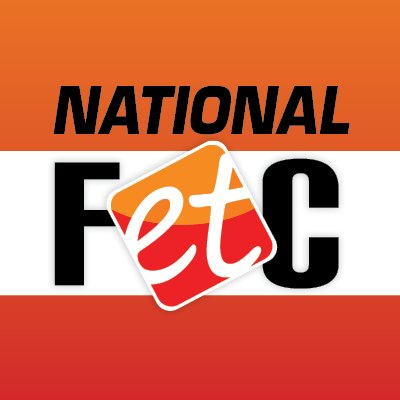As I got out of my Lyft at the Orlando airport Friday, I realized I was saying goodbye to some great new connections I made. This year’s FETC made a considerable impact on me. My next challenge will be to take the connections and learning to enhance education in my district and grow as a leader. I sat at the airport a little numb. Maybe from all the walking (possibly from carrying around my books -I need a cart on wheels like I saw Jenallee have), a little sad about just meeting some new connections and now leaving, or just could be too many “complementary” refreshments. My guess is a combination of all. I did know two things Jen Womble is a true superstar to stay the course, create a safe learning environment, and built a kick-ass event! I wanted to write a blog to share and urge everyone to reflect and take what they learned and implement it. When I began to reflect on the flight home and thought to myself, “I often give advice, and I want to achieve so much after this event; but how. So here are some ways I thought to turn all your FETC ideas into action.
REFLECT: It’s important to take time to reflect before jumping into new ideas or strategies. Four days full of speakers and breakout learning at FETC gave everyone a lot to soak in. Even with a Google doc filled with every note your fingers could type, there’s no way to remember it all. So collect your notes, set aside time to revisit them, and identify some specific action items.
DRAFT A PLAN: Give yourself a week to draft out a plan to implement any new learning. As tempting as it might be to put things into practice right away, mapping out a plan is often the most effective strategy.
ASK YOURSELF, “IS THE IDEA REALISTIC?” Unrealistic ideas, goals, and strategies are almost worse than not having any at all. Just because you heard a great idea doesn’t mean you can implement the same idea when you don’t have the environment or tools to do that.
SET ASIDE TIME TO PLAY: The implementation of new ideas is only as good as your ability to understand what impact a change would make. Try out two new resources or tools a week that you didn’t know about before the conference. Make a list of all the tools you want to try and set aside a few minutes a week to play with the new technology.
MAKE THE IDEA YOURS: Tailor any new strategies to fit your style. The implementation will not be believable and sustainable if you repeat a speaker’s message, as valuable as it may have been, without making the idea your own. Take the idea and combine it with your teaching strengths and your students. Only then will it have an impact.
CONNECT YOUR LEARNING TO OTHERS: As you review your notes, you may discover tools that would benefit other colleagues. Please don’t keep them to yourself. Instead, share your notes and links with that educator. Although you may not be in a position to make this knowledge purposeful, someone else may be able to make the idea blossom.
TWITTER CHATS: Find chats with common interests and discuss these topics and trends from the conference. Allow the conference topics to be a starting point or stimulus for taking things further, rather than an ending point.
BOOK STUDY: Many speakers at conferences like FETC have either written books themselves or suggested books for further reading during their presentations. This is a wonderful opportunity to bounce your ideas off trusted colleagues. If you need ideas for a book – I know a few I like : )
REACH OUT TO SPEAKERS: The speakers and panelists at any conference are likely key experts in your field and also very open to sharing. Don’t be afraid to ask these presenters questions via email or social media. This platform we’re all developing here are K12Leaders, as well as Twitter, Instagram, Facebook, and Voxer can be great avenues to connect with your favorite presenters and learn more.
I was so fortunate to have had this experience and honored to be mentioned in the same lens as educators I look up to on the administrative track. I also say a lot, “So what, NOW what.” How can we take all this learning and grow as a profession? It is OUR time, FETC, to take your new ideas and put them into action!



